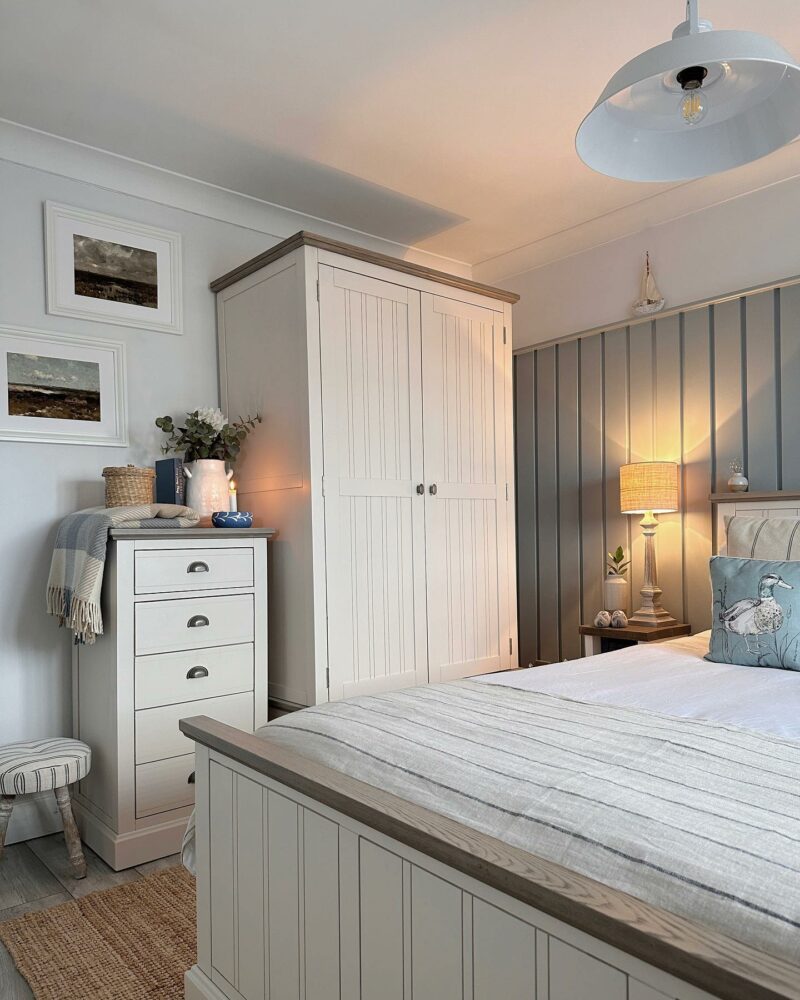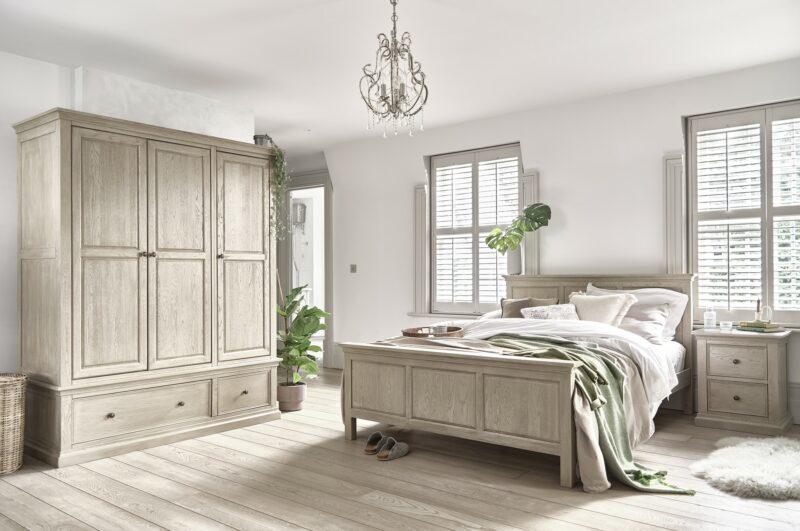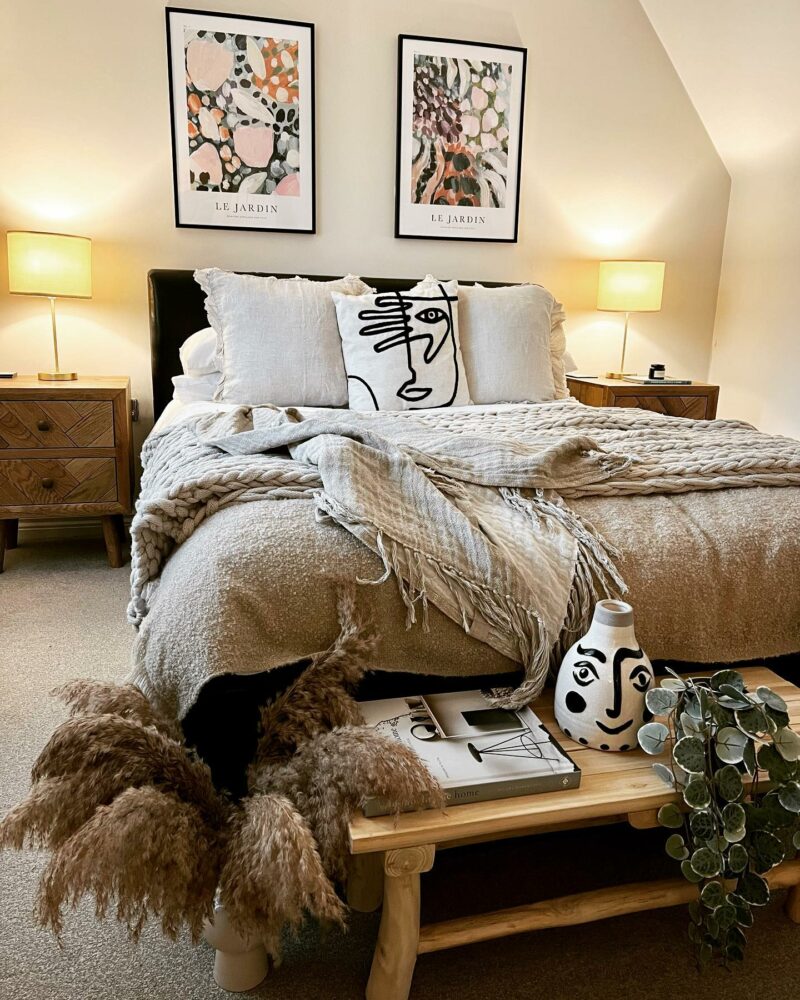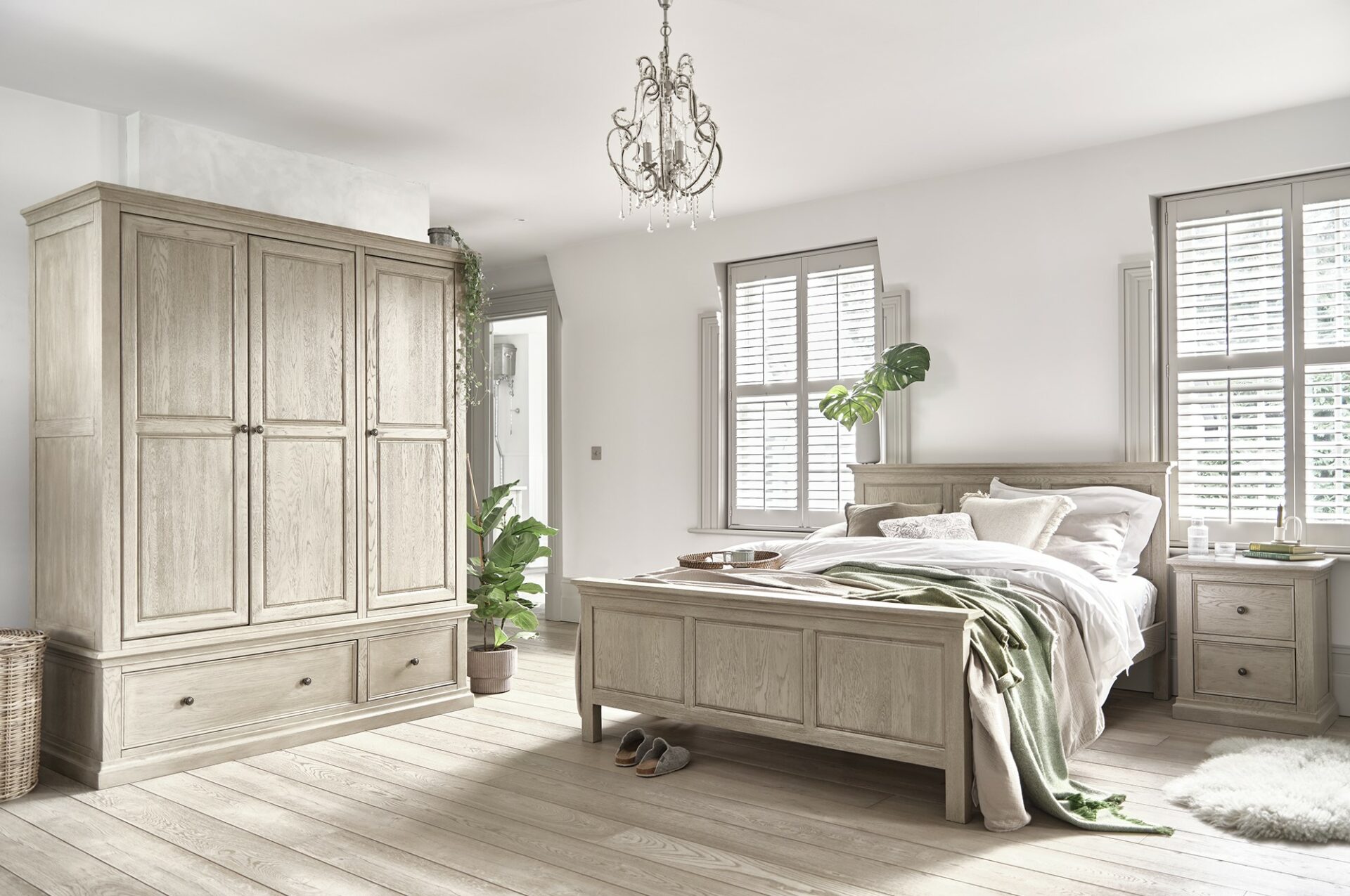According to The National Sleep Council, we spend a third of our lives asleep – it’s a big time investment! But it’s also vitally important to help us stay healthy, happy, and enjoy the other two-thirds of the time we’re awake a bit more.
Find tips for how to design a better bedroom for sleep. It’s not just about finding the perfect furniture to design a restful bedroom haven, discover the dream formula to catch some ZZZs.
Sleep takes time

Brompton wardrobe | Brompton tallboy | Brompton bed | @a_house_and_its_chows
You aren’t a machine, so don’t expect sleep to work like an on/off switch! Our bodies need time to unwind and for production of sleep hormones like melatonin to kick in.
Realistically you should start preparing for bed about an hour before you actually want to hit the hay. Start reducing screen time. Tempting as that evening Netflix binge or mindless social media scroll is, LED screens actually limit your body’s production of sleep hormones. Another trick is to think about installing dimmer switches, so that you can naturally lower the light levels in your home as the evening wears on to promote the sleeping process.
When you finally get snuggled up in bed, don’t worry if you’re not asleep immediately after your head hits the pillow; the process can take about 20 minutes! If worries are keeping your head spinning, try keeping a small notebook on your bedside table to jot them down for the morning. There are also lots of handy relaxation techniques that might help.
Create a dreamy environment

Burleigh triple wardrobe | Burleigh bed | Burleigh bedside table
There’s more to creating the perfect sleep environment than just choosing your favourite hardwood furniture style.
Did you know that the ideal sleeping temperature is 16-18 degrees? During the night your metabolism naturally slows and you cool down, so keeping your room at a moderate temperature can help kickstart that sleepy feeling.
It’s not just what you do at night that helps you sleep either! Make sure to get as much natural sunlight as possible during the day as this helps to set up a healthy circadian rhythm, our body’s natural clock, which tells us that it’s time to sleep at night.
All of your senses work together to help you sleep, so don’t forget about smell! Certain smells are known for promoting good rest. Lavender and geranium scents are two of the best to encourage sleep, and we’re also partial to the soothing smells of vanilla. Try a pillow spray or decorate your bedside table with a nice candle.
It’s all in the design details

Parquet bedside table | @home_at_hawthorn
Finally, there are some simple interior design tricks that can help you create a snooze-worthy space that begs you to spend more time in bed.
Furnish your room with beautiful, peaceful objects. Replace that phone on your bedside table with a good book that you can tuck into while you body calms down for sleep. Photos of loved ones or favourite memories on top of a chest of drawers also help to create a peaceful feeling to lull you to sleep.
Don’t forget that the foundation for a good night’s sleep is a good bed. The Sleep Council says: “If you’re hopping onto an old mattress that doesn’t offer much support, creaks and groans and sags in the middle, then chances are you won’t be experiencing the best quality sleep.”
Furnish your room with one of the fantastic best-in-class quality mattresses and be sure to deck it out with your favourite sheets, duvets and some sumptuous pillows to create a bed you just can’t help but crawl into.
And yes, colours do make a difference. In the bedroom, bright colours like reds and yellows are stimulating which is not what you want when you’re calming your mind down for rest. If you love bright tones, think about incorporating them in your accessories. Otherwise, muted or pastel tones set the perfect tones for sleep. Two of our favourite bedroom hues are light blue, which is a stunning complement to our natural oak bedroom furniture ranges, or sage green, which shines when paired with rustic tones.
At the end of the day sleep is a personal experience, so try a mix of these tips and others to suit your own personality. We’d love to see images of your bedroom. Share you snaps with us by tagging #OakFurnitureland on Instagram.

